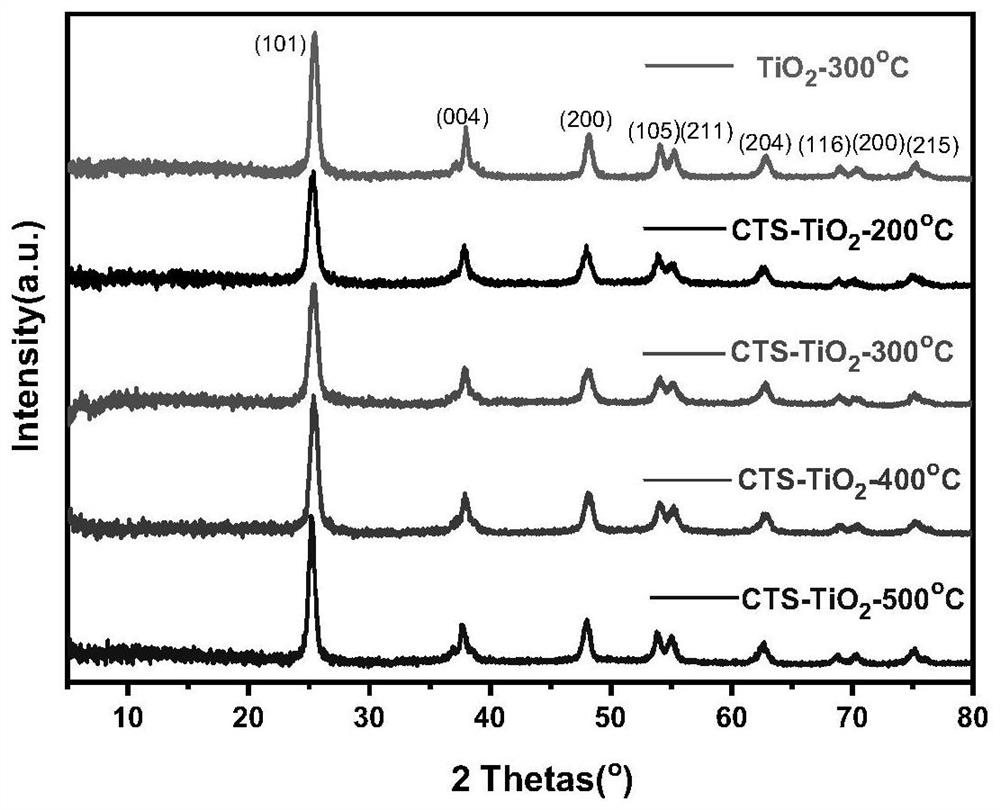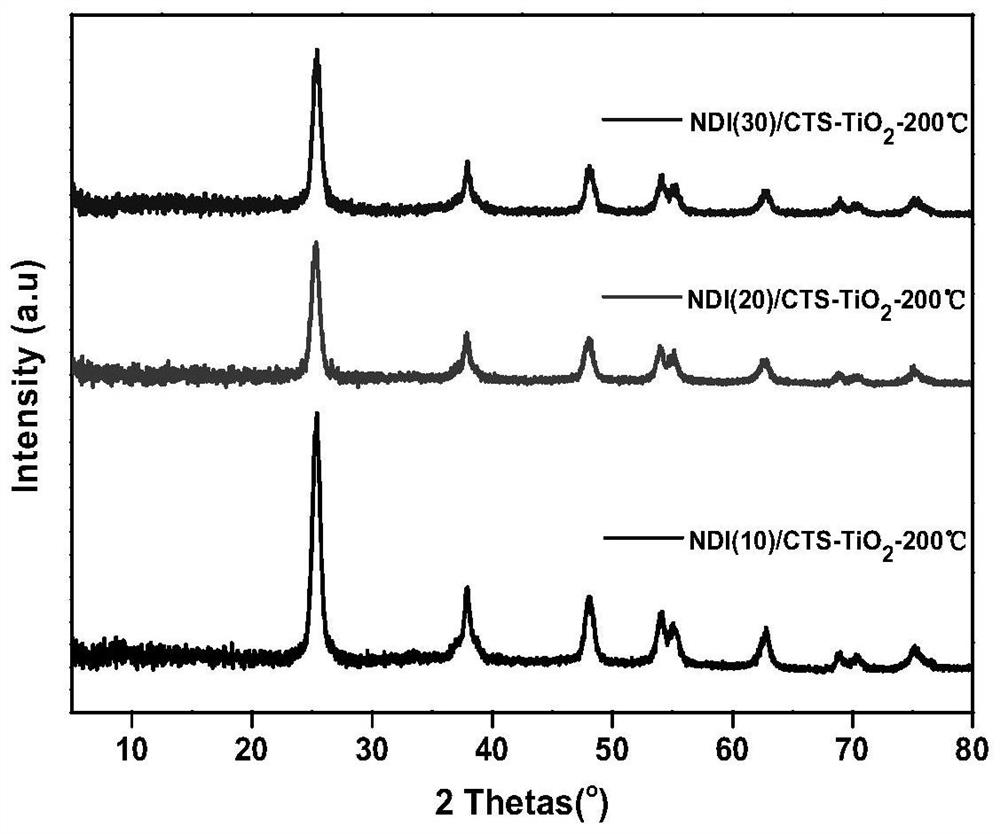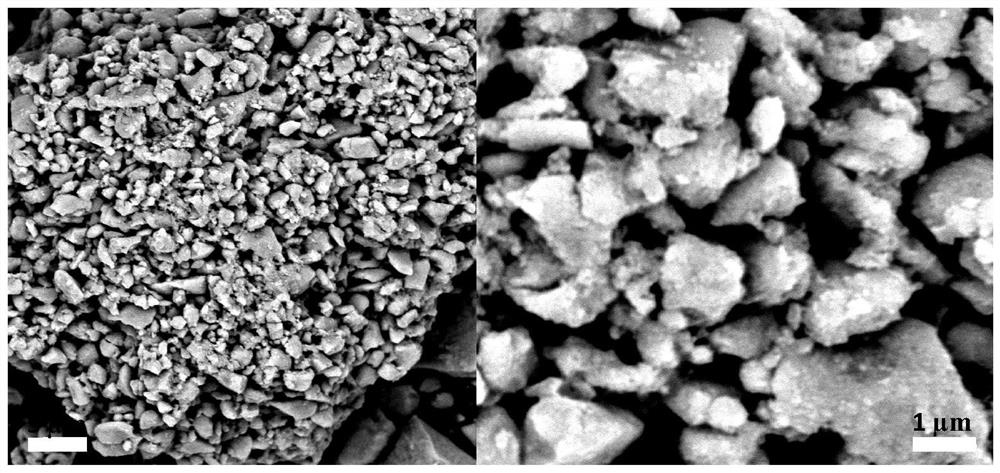Two-dimensional receptor molecule/hierarchical pore TiO2 composite photocatalyst, preparation method and photocatalytic application thereof
A technology of acceptor molecules and complex light, which is applied in the field of photocatalysis, can solve the problems of multi-dimensional functional composite materials that have not been studied by anyone, and achieve the effect of improving the activity of photocatalytic hydrogen production, obvious synergistic enhancement, and promoting separation
- Summary
- Abstract
- Description
- Claims
- Application Information
AI Technical Summary
Problems solved by technology
Method used
Image
Examples
Embodiment 1
[0035] Porous TiO 2 Preparation: Add 10mL tetrabutyl titanate dropwise to 20mL ethanol to form light yellow sol, stir, add 20mL acetic acid, then add 50mL distilled water, add 200mg degraded chitosan under vigorous stirring, stir at room temperature for 1 h, seal , hydrothermal temperature of 200 ° C for 12 h, the synthesized sample was centrifuged, washed with ethanol and water three times, placed in a vacuum oven at 80 ° C and dried overnight to obtain a light yellow solid powder sample, and the obtained solid powder was separated Calcination and crystallization at 200°C, 300°C, 400°C and 500°C.
Embodiment 2
[0037] Naphthalene tetracarboxylic dianhydride / porous TiO 2The preparation of composite photocatalyst: the 100mg porous TiO that embodiment 1 makes 2 Grind and pulverize, disperse into 20mL DMF, and keep stirring, add 10mg naphthalenetetracarboxylic dianhydride, heat at 80°C and stir for 14h, centrifuge, wash with DMF and ethanol three times, dry in vacuum at 45°C overnight to obtain a yellow-brown powder sample .
Embodiment 3
[0039] Naphthalene tetracarboxylic dianhydride / porous TiO 2 The preparation of composite photocatalyst: the 100mg porous TiO that embodiment 1 makes 2 Grind and pulverize, disperse into 20mL DMF, and keep stirring, add 20mg naphthalenetetracarboxylic dianhydride, heat at 80°C and stir for 14h, centrifuge, wash with DMF and ethanol three times, dry in vacuum at 45°C overnight to obtain a yellow-brown powder sample .
PUM
| Property | Measurement | Unit |
|---|---|---|
| size | aaaaa | aaaaa |
| size | aaaaa | aaaaa |
Abstract
Description
Claims
Application Information
 Login to View More
Login to View More - R&D
- Intellectual Property
- Life Sciences
- Materials
- Tech Scout
- Unparalleled Data Quality
- Higher Quality Content
- 60% Fewer Hallucinations
Browse by: Latest US Patents, China's latest patents, Technical Efficacy Thesaurus, Application Domain, Technology Topic, Popular Technical Reports.
© 2025 PatSnap. All rights reserved.Legal|Privacy policy|Modern Slavery Act Transparency Statement|Sitemap|About US| Contact US: help@patsnap.com



